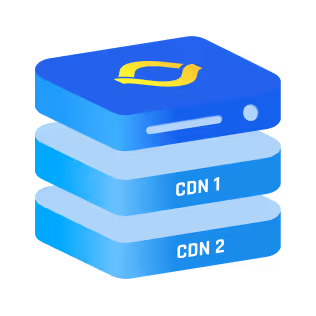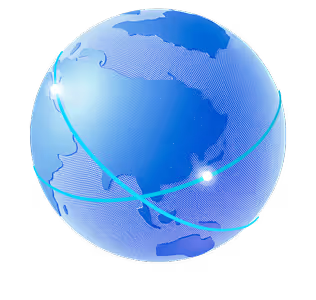Large files don’t belong on your origin server forever. A static video, software installer, or a bulky asset, drains resources when you constantly serve it from your main server; it also slows things down for your users.
That’s why push zones exist. Instead of waiting for the CDN to fetch your content on demand, a push zone lets you upload files directly to the CDN.
What Is a Push Zone?
A push zone is a type of content delivery method used in a Push CDN (Content Delivery Network). You upload your files directly to the CDN’s servers, you're “pushing” content into the network ahead of time.
So instead of the CDN fetching content from your origin server when a user makes a request, it already has your files stored in its edge locations.
This makes delivery fast and reduces the load on your main server.
If you’ve ever heard the phrase pushing for zone in tech circles, this is what it usually refers to; getting your content into a push zone for wider and faster delivery.
How Does a Push CDN Work?
Here’s the flow:
- You upload files to the CDN manually or through automated deployment tools.
- The CDN stores those files in its edge servers across multiple global regions.
- When a user requests that content, it’s served directly from the nearest edge location.
- Your origin server is not involved in this transaction. Zero pull needed.
This is why a push zone can be powerful for static content, think images, videos, documents, large downloads, or software binaries.
{{cool-component}}
Types of Push Zone Storage
Not all push zones are built the same. While the concept is simple (push files, serve from edge) the storage model underneath can vary depending on the CDN provider.
Here are the most common types:
- Object Storage Backed Push Zones
Some CDNs (e.g. Bunny, KeyCDN) use object storage to store push files. Think of it like Amazon S3, but built into the CDN. You upload via FTP, and files are stored in a structured object store, then replicated to edge. - Block Storage or File-Based Zones
Other CDNs offer push zones built on traditional file storage. These systems mimic a true directory structure and may behave more like a static web host. They’re easier to navigate but may have slower replication speeds. - Distributed Edge Storage
A few high-end providers push content directly to edge locations. Your files are stored on the edge servers themselves, rather than being pulled on demand or served from a central node. This speeds up delivery but can introduce storage limits per edge region.
Each model affects:
- Upload speed (centralized vs edge replication)
- Availability timing (instant edge access vs delayed propagation)
- Purge mechanics (central delete vs edge invalidation)
Push Zone vs Pull Zone (Push vs Pull CDN)
So, what’s the difference between a push and pull CDN?
Let’s break it down:
TL;DR:
Use push when you want full control and serve large files often.
Use pull when you want speed to market and deal with changing content.
CDN URL Routing in Push Zones
When you upload a file to a push zone, it’s stored under a path that mirrors your folder structure.
That path is then served through the CDN’s URL routing system; usually via a public CDN domain or a custom domain you’ve linked.
For example, if you upload videos/tutorial.mp4 into your push zone, the file becomes instantly available at:
https://your-cdn.example.com/videos/tutorial.mp4
There’s no dynamic mapping. The CDN doesn’t “look” for files; it expects them to exist exactly where they were pushed. If the file isn’t there, it returns a 404 immediately. There’s no origin fallback, no revalidation, no pull behavior.
Push zones also allow clean, cache-friendly routing. File extensions and folder names map directly to edge nodes. That means no database lookups, no rewrites, just raw file access at scale.
Most push CDNs support:
- Static file hosting logic (serving index.html in folders)
- Path-based headers (setting cache rules per folder)
- CDN-level redirects (like trailing slash removal)
If your pathing is clean, routing in a push zone is near-instant; no origin negotiation, no middlemen.
When Should You Use a Push Zone?
There’s no one-size-fits-all, but here’s when push zones shine:
- You have large static files (like game patches, video files, installers)
- You want to reduce hits on your origin server
- Your content doesn't change often
- You’re hosting files for global download and want reliable delivery
Push zones also give you predictable performance. Since files are pre-uploaded, there’s no latency from fetching them during traffic spikes.
{{cool-component}}
How to Set Up a Push Zone
It varies by provider, but the general steps look like this:
- Create a push zone in your CDN dashboard.
- Upload your files via FTP, SFTP, or the CDN’s file manager/API.
- CDN replicates content to all its edge servers.
- You’re given a CDN URL or custom domain to deliver the content.
You’ll want to automate this if you update content frequently. Most CDNs support CLI tools or integrations (CI/CD pipelines, webhooks) to push updates in bulk.
Benefits of Using Push Zones
Here’s why a push zone might be your go-to:
- Fast delivery from edge locations
- Reduced origin dependency (no server calls)
- Good for offloading bulk file hosting
- Predictable performance even during traffic surges
- No risk of origin server going down under load
Downsides of Push Zones
They’re not always the perfect fit. Here’s what to keep in mind:
- Takes more setup time than a pull zone
- Requires manual or scripted uploads
- Can waste storage if files go unused
- Changes need a re-upload; no live sync with origin
In short, push zones offer stability and speed, but demand a bit more planning.
SEO Implications of Push Zones
One side point many forget; if you serve assets (like images or files) through a push CDN, make sure you:
- Use canonical URLs to avoid duplicate content penalties
- Keep robots.txt/CDN indexing rules in check
- Ensure content headers (e.g., cache-control, content-type) are properly set
It’s less of an issue with file downloads, but it matters for static HTML or indexable assets.
Conclusion
Think of a push zone as a CDN setup where you take control. Instead of waiting for your files to be fetched, you send them out in advance, directly into the CDN’s global edge network.
It takes a little more prep, but the payoffs are big: faster delivery, lower origin load, and smoother experiences for your users.



.png)
.png)
.png)






